Consulting Career Guides
7 Consulting Frameworks that work for SAP and AI Delivery
Noel DCosta
- Last Update :
If you’re running an SAP or AI project and it’s not going the way it should, this is the short answer: there are seven consulting frameworks that help bring control, speed, and clarity to delivery. These are some of the frameworks I have used for the last 23 years in the projects that I have done.
So, you can be sure that this is not theory, this is my practical experience. Experience of being a client and a consultant in multiple countries. These are tools that actually work when you’re deep in a program and things start to slip or when you want to avoid slipping in the first place.
These frameworks help with mapping where you are versus where you’re going, knowing who decides what, prioritizing what matters and catching risks before they cost you
This article walks through each of the points above.
I’ve written this article specifically for delivery leads, internal teams, and project owners who need structure without the jargon. So, whether you’re planning a rollout, stabilizing a build, or trying to make AI useful, I can tell you that these frameworks are not experimental, these frameworks can help you significantly.
You’ll recognize some. A few might be new. All of them work if used the right way.
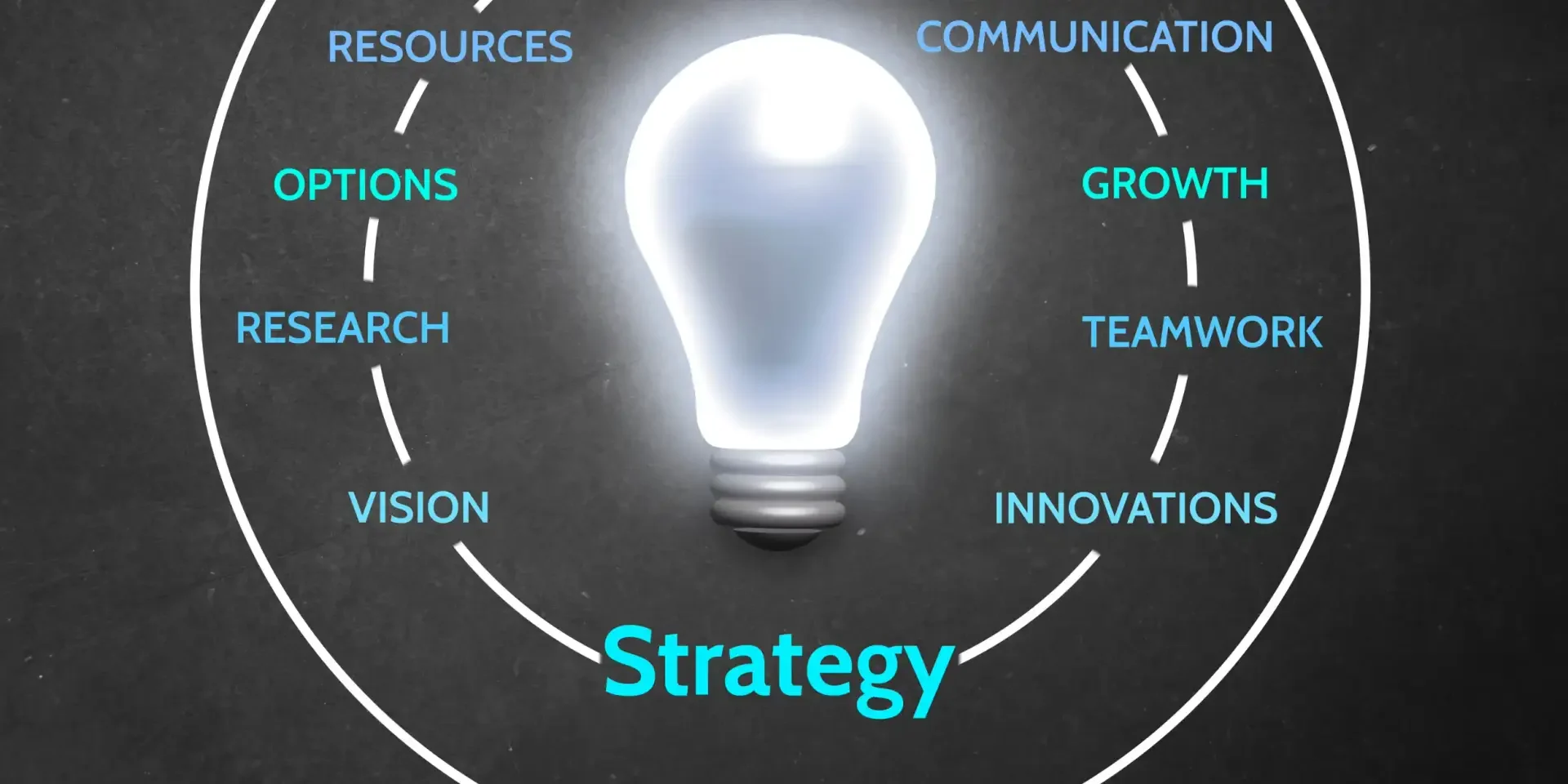
Consulting frameworks provide a structured way to approach business problem solving by breaking complex issues into clear, actionable components.They help consultants analyze situations efficiently and communicate recommendations with clarity.
Why SAP and AI Projects Stall (And Which Consulting Frameworks Help)
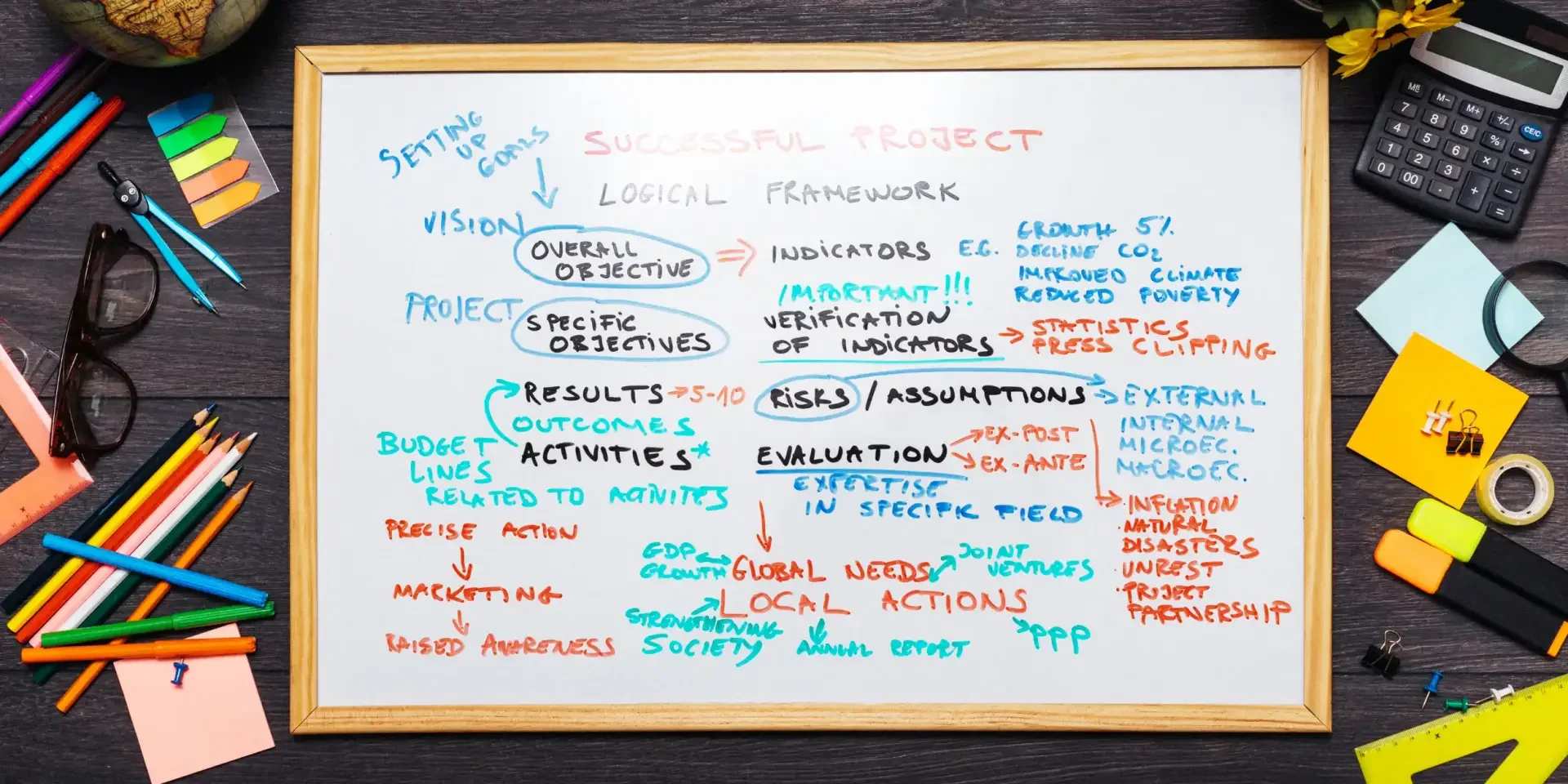
Most SAP and AI projects do not fail for technical reasons. They stall because something basic gets overlooked.
For example, the scope may never be fully agreed. People assume everyone is aligned, but in meetings, you start hearing different versions of what success means. Or the plan keeps changing, slowly, without anyone acknowledging that the impact is now much bigger than what was originally signed off.
Workshops run long. Decisions get delayed. At some point, there is more reporting than actual progress.
1. The early signs of trouble are subtle
You might hear:
“We’re almost there, just finalizing the scope”
“We need to check with the other team”
“It is mostly done, we just need to align on one thing”
This can go on for weeks. Sometimes longer.
2. Why most teams wait too long to ask for help
There is a hesitation. Nobody wants to escalate too early. And in fairness, some issues do resolve on their own. But once you start hearing the same blockers come up again and again, it is often no longer about the work. It is about structure or the lack of it.
That is where the right consulting frameworks come in. Not as more documentation. Not as a checkbox.
What consulting frameworks actually do
They give you a way to:
Define decisions before they get bottlenecked
Map what really exists before promising change
Prioritize based on value, not politics
Catch gaps early, when they are still manageable
Some frameworks you already know. Others you may have skipped because they felt too formal. In practice, they create speed. Used well, they reduce the noise and help the right people focus on the right things.
When these patterns start repeating, it usually means the team needs a reset. That is where we come in. Structured, focused support, not more templates.
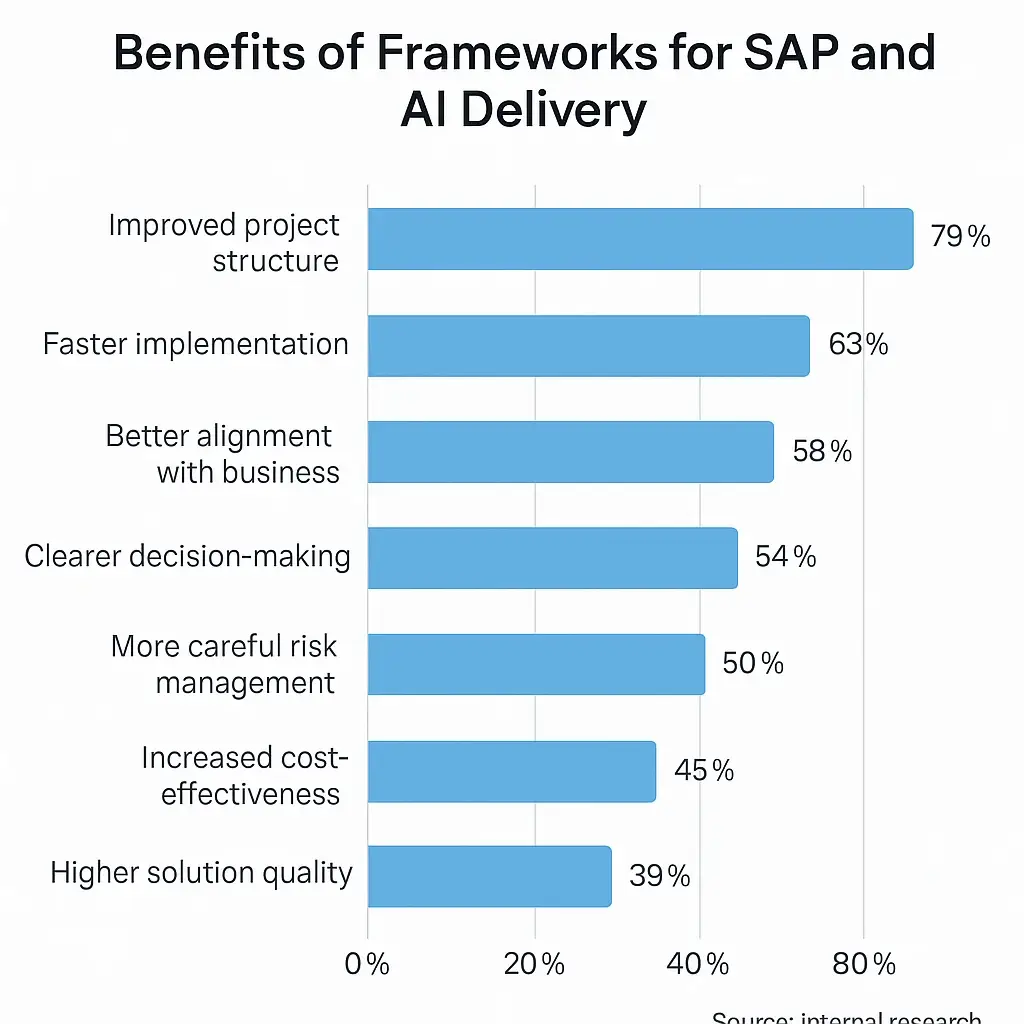
Framework #1 – Map Where You Are Before Planning the Fix
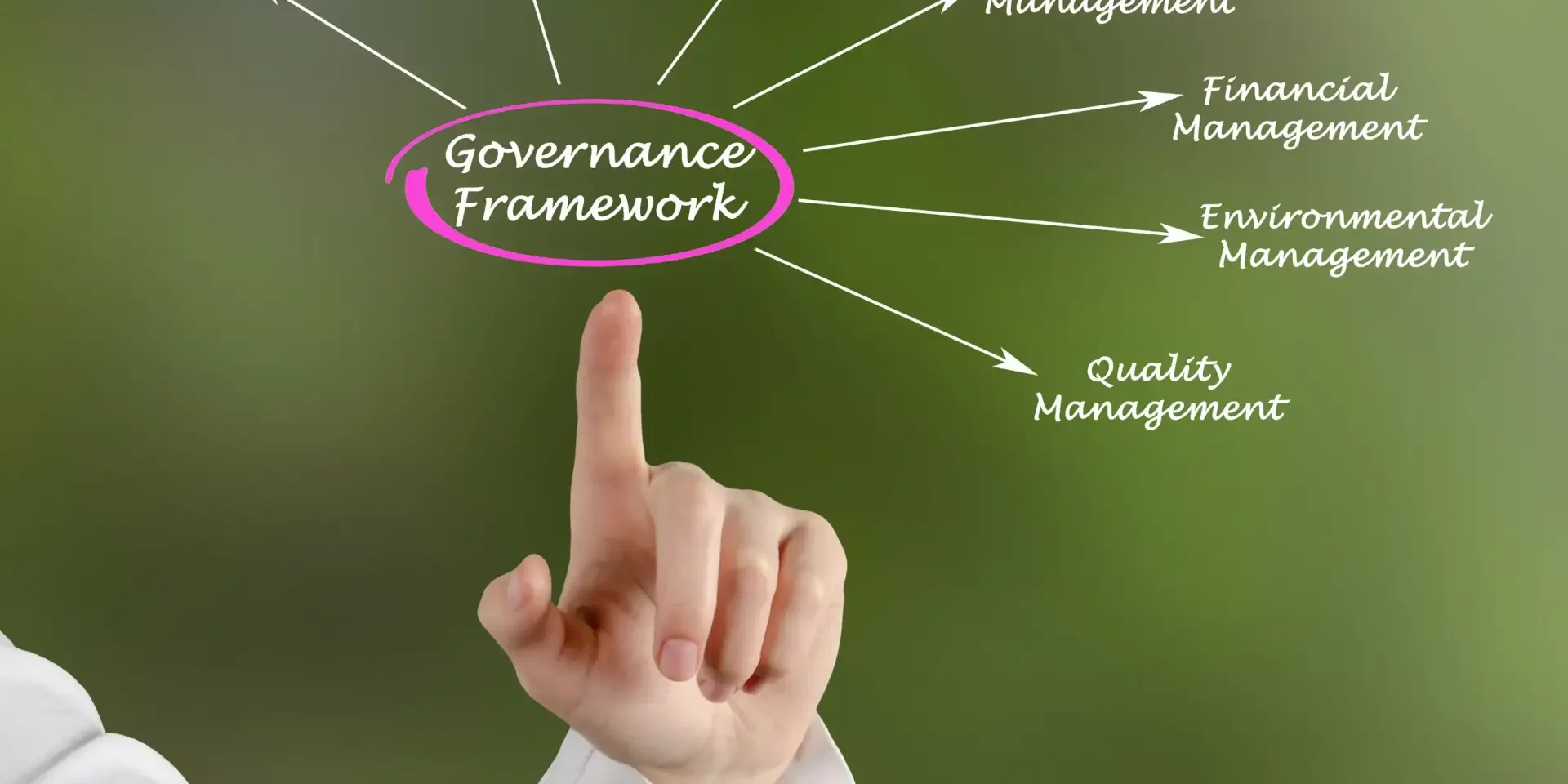
Before any project gets shaped i.e. before scope, timelines, or budgets are finalized, the most basic step is to understand where you are right now. You would think this part is always done well. It rarely is.
Many SAP or AI initiatives begin with partial or outdated views of the current environment. Some documents may exist, but they are usually built from what people believe the system does, not from how it actually works day to day.
1. Why most current state maps miss the mark
A lot of it comes down to shortcuts. People skip interviews. They rely on old diagrams or assume that “finance handles that” or “the integration is stable.” But when we dig in, here’s what often turns up:
Unofficial workarounds that users never reported
Outdated integrations no one wants to touch
Legacy processes still running behind newer tools
Teams who stopped following the documented steps months ago
It is not always deliberate. Sometimes, things just evolve faster than they are tracked.
2. Why should you know the Current State before planning any fix
Whether it is an S/4HANA upgrade or an AI use case being scoped, starting without an accurate as-is analysis leads to rework. Teams plan based on assumptions. Then later, they hit blockers that could have been identified with a more honest map.
Consulting frameworks help here. They guide how to run this mapping quickly across business, technical, and data layers, without turning it into a month’s-long exercise.
3. We run this as a short engagement
You really don’t need heavy documentation. Just a focused, practical view of your current state which outlines:
Core processes as they exist
Known and unknown gaps
Risk areas if change begins now
If you are preparing for a major shift or already in-flight and feeling uncertain, this helps reset the foundation. Usually, we can get it done in a few sessions. What you do with the insights after that part, becomes much easier.

See How I Make Your ERP and AI System Selection or Implementation right for you.
ERP & AI System Selection – Identify and choose the right ERP or AI-enabled platform to fit your business needs.
Project Support & Recovery – Keep your project on track or bring failing implementations back under control.
ERP Modernization – Transform existing ERP systems to modern, efficient, and scalable ERP environments.
GET IN TOUCHFramework #2 – Know Who Decides What (Before it causes a delay)

When delivery slows down, it often has little to do with the actual work. What causes friction, more often than not, is unclear decision-making.
In SAP programs, particularly across regions or shared services, people assume the authority structure is already understood. But once something needs signoff or someone needs to take responsibility, things pause. Or worse, they move ahead without anyone really owning the outcome.
AI projects feel similar, but in a different way. There may be no clear owner for a model, or no one assigned to validate how it behaves once it goes live.
1. Where it starts to break
One team thinks they decide
Another thinks they only need to be informed
And the vendor is usually just waiting on a go-ahead from someone
The problem is not always about intent. It is structure.
Matrix organizations complicate this. Everyone has a voice. Fewer have authority. And decisions float between teams until someone either forces alignment or escalates.
2. Why consulting frameworks make a difference here
This is where a basic RACI matrix, if built with the right detail, becomes useful. You need to document:
Who owns key calls
Who approves scope shifts
Who needs to be looped in, and when
Decision logs help too. Not to blame, but to track what was agreed, by whom, and why. You will be glad to have them six months later.
3. We help teams set this up
Usually before cutovers. Or just before vendor escalations begin. In AI work, we often do it ahead of pilot launch.
Sometimes you just need a clear, shared view of who holds the pen. And once that part is stable, delivery starts moving again.
Framework #3 – Tie SAP and AI to Business Capabilities
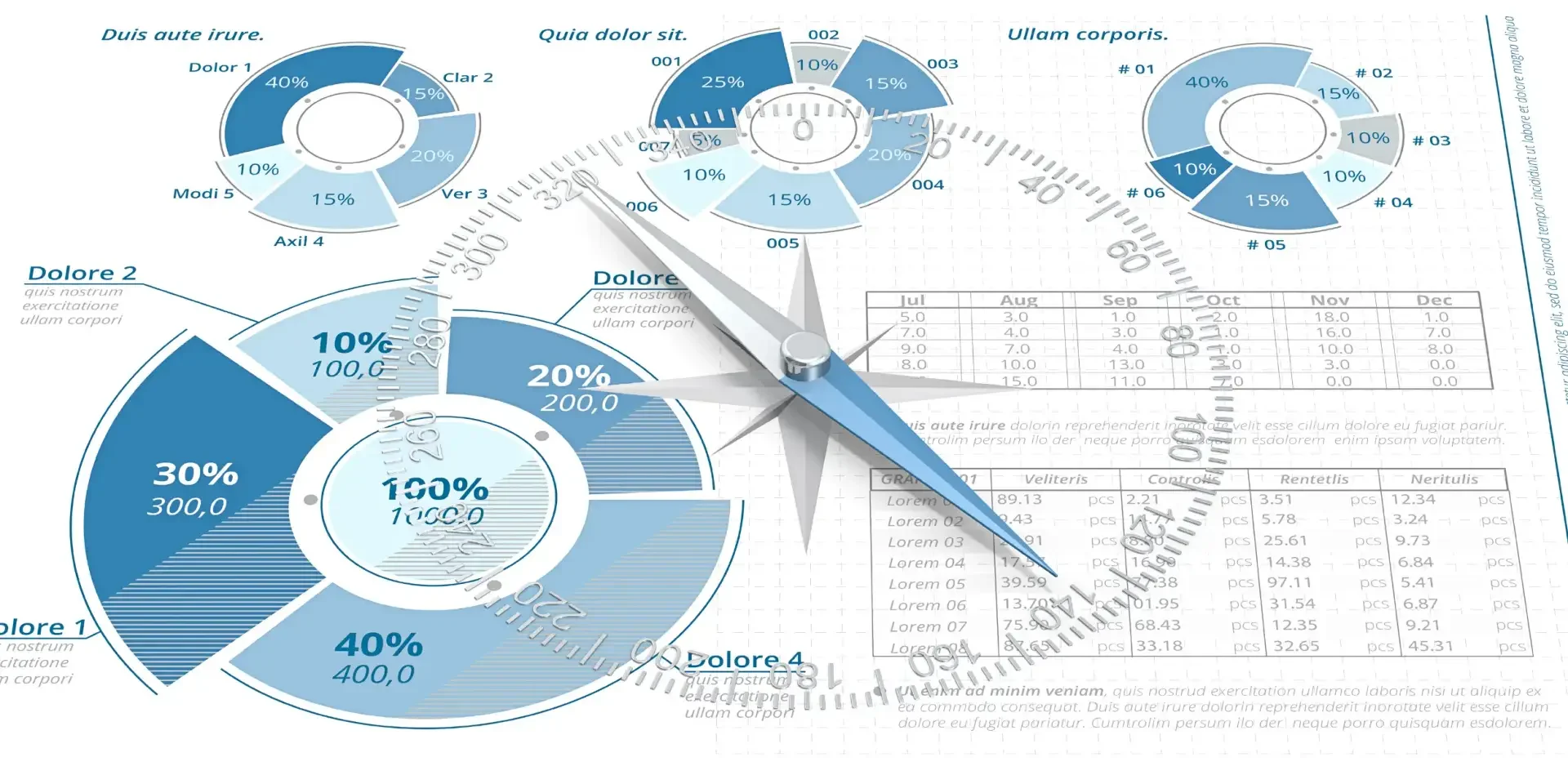
Most SAP and AI projects begin with a system view which includes modules, interfaces, features. That is how the design gets scoped, how resources get assigned, and how vendors pitch solutions.
But that structure rarely reflects how the business actually works.
You might have a module for procurement, but that does not explain how sourcing decisions get made. Or you may implement machine learning to automate part of finance, only to find the process it supports is owned by two different teams who work in silos.
1. Why technical structure does not equal business value
Features and tools do not deliver outcomes on their own. They need to be tied to something real.
This is where business capability mapping becomes useful. It provides a shared language across technology and operations, focused on what the organization does, not just how systems are arranged.
You do not need to go overboard. Start with the basics:
What are the core functions the business relies on?
Who owns them?
Where are the weak spots or inconsistencies?
Once that map exists, it becomes much easier to align SAP configuration or AI use-case design to something that matters.
2. Consulting frameworks help anchor that alignment
They guide how to break the work into capabilities, tie it to processes, and map the systems underneath.
In practice, this helps:
Prioritize work based on capability maturity
Identify overlap across regions or departments
Spot areas where AI could reduce complexity or waste
It also stops the pattern of chasing features that solve nothing.
3. We offer capability mapping as a diagnostic
It works well before building a roadmap. Especially when multiple systems are in play or the business feels disconnected from the project.
Often, this gives teams just enough structure to align without overengineering. And that tends to be when things finally start moving forward.
Related Articles: Consulting Strategy and Decision Frameworks
Structured Thinking and Problem Solving
Use structured models to solve SAP and AI delivery issues faster and more clearly.
Effective SAP Project Steering Committees
How to apply governance models that actually shape outcomes and are not just formality.
Top Skills Engineers Need to Succeed in Consulting
Consulting frameworks only work if the team has the mindset to apply them.
SAP Risk Matrix and Mitigation Models
A framework-based approach to spotting, assessing, and containing delivery risks early.
Framework #4 – Get to the Root Cause (Before You Patch Again)

Some issues just keep coming back. You fix them, or at least try to, and they show up again a few weeks later.
In SAP, it might be a report that keeps showing wrong values or a posting error that support clears each time, but nobody really checks why it happens. In AI, the model might work during testing, then drift in production, and everyone blames the data without knowing what actually changed.
1. The pattern shows up early
Reopened tickets
Repeated overrides
Teams building manual checks to stay ahead of automation
That is when you know a patch is no longer enough.
2. Why root cause analysis is important
You can usually get to the bottom of most of these issues. But it takes a structured way of asking “why” until you run out of guesses. That is where the 5 Whys method holds up.
Simple, yes. But when applied properly, especially in cross-functional teams, it avoids finger-pointing and gets people focused on fixing what matters:
A configuration error buried under an outdated workflow
A dependency no one documented
A model output tied to stale training data
Incident logs help too, not just to track volume, but to spot patterns. In many cases, the actual root cause affects more than one area.
3. We run this across teams when things feel stuck
This is usually done during Post-go-live support or when a POC failed but no one is really sure why.
Using consulting frameworks like structured RCA gives the team clarity without slowing the work down. In fact, it usually clears the path for faster progress. And the fix, once done properly, tends to stay fixed.
Framework #5 – Prioritize Ruthlessly or Burn the Budget

In SAP and AI delivery, there is always more demand than time or budget. That is just the reality.
Every team believes their request is critical. Every process owner wants their feature in the first release. And if you are not careful, you end up with a build phase packed with scope that barely fits and often does not land well.
MoSCoW is a prioritization framework. It is used to help delivery teams and stakeholders agree on what should actually get done first, and what can wait.
You might already know it. Or maybe you have heard it in passing, but never really used it in practice. It is simple enough in theory, but surprisingly effective when applied in a live project.
The breakdown looks like this:
Must Have
These are non-negotiable. If these are not delivered, the project does not function. It does not mean nice-to-have or politically urgent. It means the outcome fails without them.Should Have
Important, yes. But if time runs short, you could go live without these. Some might say this category holds the “realistic stretch goals.”Could Have
Low effort, low impact. These are usually enhancements or small extras. Valuable, but rarely critical.Will Not Have (for now)
Not discarded. Just clearly marked as out of scope for this phase. Logged, not forgotten.
1. What happens when everything becomes a priority
You start to see signs like:
Change requests creeping in during testing
User stories growing in complexity after signoff
Endless debates about “must-have” features
Soon, the team is too busy building to ask whether what they are building still makes sense.
2. MoSCoW helps bring structure
This is where consulting frameworks like MoSCoW work well. You separate:
Must-haves from should-haves
Could-haves from things that probably should wait
It is simple on paper, but in the room, it takes work. Because you are asking teams to make real trade-offs. That usually needs facilitation, someone who is neutral but understands the business and the delivery constraints.
The goal is not to cut. It is to focus.
Focus on what delivers business value. Not what got asked for first. Not what sounds impressive. And not what just fills the gap in a system diagram.
3. We run MoSCoW sessions to align scope before build
Usually just before development begins or after a backlog starts to balloon. We bring business and technology together to make clear calls, fast.
The result is not just a cleaner scope. It is a build plan that actually holds. And a team that can defend why they are working on what they are working on. Without that, even the best-designed solution ends up late or underused.
Framework #6 – Rank Risks by What Can Break You

Most project risk logs do not tell you much.
They often come prefilled from a template. Someone copies in standard risks like “resource availability” or “scope creep” and calls it a day. These risks look neat. Some even get RAG status updates. But when things go wrong, they are rarely the ones that caused it.
1. What matters gets missed
The real risks are often specific. Localised. A bit uncomfortable to say out loud.
For example:
A data load that no one has ever tested end to end
A cutover plan with gaps no one fully owns
Or an AI model pushed to production without knowing how it will behave with real inputs
You cannot address everything. That is where a proper SAP risk matrix or one tailored for AI, becomes useful. Not just to log issues, but to rank them.
2. Focus on what can stop the project
The idea is to filter risks by two things:
Impact if it hits
Likelihood it could happen
Then work on the ones in the top-right corner. That is where projects often break.
These types of assessments show up in good consulting frameworks. Not just as compliance, but as part of real delivery thinking.
3. We run these walkthroughs with teams and execs
Short sessions. Very targeted. Focused on what could derail go-live or damage outcomes.
They work best when done early. But even mid-flight, they help refocus effort where it matters most. And the conversations they trigger usually surface the things no one was saying out loud but probably should have.
Framework #7 – Review What Broke (So You Don’t Repeat It)

Projects move fast in the build-up to go-live. Once it’s done, there is usually a push to wrap things up, hand over support, and move on.
But that is exactly when teams need to pause briefly and look back at what actually happened.
Not just what went wrong. But also what nearly did.
1. Why most reviews are skipped or sugar-coated
There is a tendency to avoid post-go-live reviews. Part of it is fatigue. Part of it is the discomfort of surfacing mistakes.
And when reviews are done, they are often too high-level. Or too cautious. You get general feedback like:
“Testing could have been better”
“Training was a bit rushed”
“We had some integration issues, but nothing major”
It sounds acceptable on paper, but it misses the real story.
2. A good post-mortem gives the project a memory
Used well, these reviews become tools for tuning configuration, adjusting support, and improving future rollouts. In SAP projects, they often highlight:
Where handovers failed
What change management missed
What configuration caused repeated user friction
For AI, it is just as important and maybe even more. Because trust is harder to repair if a model behaves unpredictably. A review helps identify:
Gaps between expected and actual model output
Misalignment between data and business process
Signals the model relied on that no one noticed during testing
These reviews are part of better consulting frameworks. Not because they solve everything, but because they give teams a starting point for improvement.
3. We run structured reviews when pressure dips
Usually during hypercare or after a tough go-live. Sometimes after a pilot that missed its mark.
What matters is that someone asks the right questions while the details are still fresh. You do not need a big workshop. Just a structured way to collect what was missed, before it gets repeated in the next phase.
How to Use These Frameworks in Your Own Delivery Work
You do not need to apply every one of these consulting frameworks at once. Some work better as stand-alone tools. Others make more sense when embedded into your delivery model from the start.
It really depends on where your project is.
If things are stable but you want tighter scope control, start with prioritization. If the work is already drifting or teams are misaligned, begin with role clarity or a proper root cause review.
For early-stage programs, we often begin with a simple assessment:
What structure is already in place
Where decisions are stalling
Which risks are not being surfaced clearly
That leads into triage. Then into support.
Internal teams can take these frameworks forward once they are in motion. You do not need external help forever. But getting a clear starting point from someone who has done it before, saves time and frustration.
Especially when projects are under pressure.
A quick check is sometimes all it takes
You may not need a full reset. Maybe just one session or an outside view to confirm what you already suspect.
Let’s talk if your current setup feels off. Even if it is mid-flight. These frameworks are meant to support delivery, not slow it down. And most of them work best when applied just in time, not too late.
How to Use Business Frameworks Effectively
| Recommendation | What It Looks Like in Practice | Example |
|---|---|---|
| Use Frameworks to Ask Better Questions, Not Just Fill Boxes | Begin with curiosity. Use the model to sharpen your thinking, not to complete a form. | Rather than just completing a SWOT, ask: “What do we actually know about our threats? What are we guessing?” |
| Adapt the Model to Fit the Problem | Simplify or mix frameworks if that gets to insight faster. | Use “Product, Price, Promotion” from the 4Ps if “Place” is irrelevant to a digital app. |
| Use Visuals Sparingly but Clearly | Clarity beats polish. A sketch on paper is often more useful than a highly designed slide. | A whiteboard MECE tree can simplify more than a ten-slide deck. |
| Pair a Framework with a Hypothesis | State your belief first. Use the model to test it, not to wander. | “We think pricing is the issue” → Use the Profitability Tree to confirm or refute it. |
| Do Not Apply Every Framework to Every Problem | Pick the model that delivers insight quickly. Avoid over-analysis. | Skip Five Forces when fixing an internal workflow. It is not a market entry question. |
| Use Frameworks to Align Teams, Not Just Analyze Problems | Frameworks help people get on the same page faster. | Start–Stop–Continue works in retros without triggering blame. |
| End With Clear Action | Insight matters only if it leads to a decision or a next step. | After a Pareto review of churn causes, act: “Let’s fix onboarding emails this week.” |
Putting It All Together in a Case Example

Sometimes the best way to understand how consulting frameworks work is to see them in action. So, here’s a condensed version of a real project, just for you to know how it unfolded.
The setup
A mid-sized media company in Qatar was rolling out SAP across multiple regions. Finance and procurement were going live in the first phase. At the same time, they wanted to introduce a few AI-driven forecasting models into their reporting stack.
The timeline was tight. Expectations were high. But clarity was missing.
What started to go wrong
By week six, delays were creeping in. Business users said they had signed off requirements but still felt confused. AI use cases had been proposed, and no one could explain who owned the data or how the output would be used.
Stakeholders were showing up to meetings late or not at all. Priorities kept shifting. The risk log looked fine on paper, but everyone felt on edge.
It was that in-between phase. Too early to call it a failure. Too late to pretend it would fix itself.
Where consulting frameworks came in
Here’s what we applied, step by step:
A current state map, not from documentation, but from workshops with users
A tight RACI model, just for high-risk decisions
MoSCoW prioritization, used live with business and technology
A fast risk-impact matrix, reviewed weekly, not monthly
Post-sprint root cause reviews for repeated blockers
And yes, a post-mortem session, right after go-live which focused on action, not blame
Not all of it was welcome at first. Some sessions were quiet. Others went off track. But eventually, the structure made it easier to work. The team stopped circling. The backlog became manageable. AI use cases got real owners.
The project went live eight weeks later than planned. Not perfect. But it landed.
And more importantly, the second phase started on better ground. With fewer unknowns.
Related Articles: AI Governance and Framework-Driven Delivery
AI Governance in SAP Implementations
Why frameworks matter for AI accountability, especially in regulated SAP environments.
Building a Responsible AI Governance Framework
Use this blueprint to guide how AI is applied, tracked, and aligned with business ethics.
AI Risk Management Framework (2025 Edition)
A practical guide to identifying and mitigating delivery risk when AI is involved.
Simplify Your ERP with AI Tools
See where AI frameworks can enhance and not overcomplicate your SAP project delivery.
Final Word – Structure Beats Theory in High-Stakes Projects
None of these consulting frameworks are silver bullets. They do not guarantee success. But in high-stakes delivery, they give you something better, and that is structure.
When decisions pile up and timelines compress, you need more than a theoretical framework. You need a way to focus so that you can simplify what matters and move the rest aside, at least for now.
These tools do that. Sometimes quietly. Sometimes very visibly.
In SAP programs, they help you stay anchored when multiple teams are pushing in different directions. In AI, they give you a way to manage uncertainty when models start behaving in unexpected ways.
Templates are easy to find. What is harder to get is clarity. Knowing where to intervene. What to slow down. What to let run.
That comes with experience. And with the discipline to apply simple tools when the pressure is on.
If this sounds familiar, let’s talk
Maybe you have seen these patterns before. Maybe you are in one of them now. Either way, we work in the middle of projects like this.
Sometimes to prevent the stall, other times to help pull things back on track. Either way, we come in where delivery needs structure and not confusion.
Summary: How to Use Business Frameworks Effectively
| Guideline | Quick Description |
|---|---|
| Ask Better Questions | Use frameworks to deepen understanding, not just fill boxes. |
| Adapt to Fit Context | Don’t force-fit. Modify or simplify models to suit the situation. |
| Start with a Hypothesis | Pair models with a working theory to guide focus. |
| Prioritize Action Over Analysis | Use insights to drive clear, practical next steps. |
| Use Selectively | Don’t apply every tool to every problem. Be intentional. |
| Drive Alignment | Use shared models to get team buy-in and clarity faster. |
If you have any questions or are looking to become a consultant, please don't hesitate to reach out!
Questions You Might Have...
1. What are consulting frameworks in SAP and AI implementations?
Consulting frameworks are structured methodologies employed by consultants to guide the planning, execution, and evaluation of SAP and AI projects. They help in aligning technology solutions with business objectives, ensuring efficient resource utilization, and mitigating risks throughout the project lifecycle.
2. How do consulting frameworks enhance SAP project delivery?
In SAP projects, consulting frameworks provide a roadmap for tasks such as requirement gathering, system configuration, testing, and deployment. They facilitate clear communication among stakeholders, streamline processes, and help in identifying potential issues early, leading to smoother implementations and better outcomes.
3. Why are consulting frameworks crucial for AI implementation planning?
AI projects often involve complex data analysis and model development. Consulting frameworks assist in defining clear objectives, selecting appropriate algorithms, ensuring data quality, and establishing evaluation metrics. This structured approach increases the likelihood of successful AI integration into business processes
4. Can consulting frameworks be customized for different industries?
Yes, consulting frameworks are adaptable and can be tailored to meet the specific needs of various industries. For instance, a framework for the manufacturing sector might focus on supply chain optimization, while one for the healthcare industry could prioritize patient data management and compliance.
5. What are common components of a consulting framework in SAP projects?
Typical components include project scoping, stakeholder analysis, risk assessment, change management strategies, and performance monitoring. These elements work together to ensure that the SAP implementation aligns with organizational goals and delivers measurable benefits.
6. How do consulting frameworks support change management in AI projects?
Consulting frameworks provide structured approaches to manage the organizational changes that accompany AI implementations. They help in preparing staff for new technologies, redefining workflows, and establishing governance policies to oversee AI systems effectively.
7. What role do consulting frameworks play in risk mitigation?
By identifying potential risks early in the project lifecycle, consulting frameworks allow for the development of contingency plans. They promote proactive risk management, reducing the likelihood of project delays, cost overruns, or system failures.
8. Are consulting frameworks applicable to both on-premise and cloud-based SAP solutions?
Absolutely. Consulting frameworks are versatile and can be applied to various deployment models, including on-premise, cloud, or hybrid SAP solutions. They help in addressing the unique challenges and considerations associated with each deployment type.
9. How do consulting frameworks facilitate stakeholder engagement?
They provide clear communication channels and define roles and responsibilities, ensuring that all stakeholders are informed and involved throughout the project. This engagement is critical for gaining buy-in and facilitating smooth transitions during implementations.
10. Where can I find resources to learn more about consulting frameworks in SAP and AI?
For a comprehensive overview of consulting frameworks, you can refer to Noel D’Costa’s guide: 7 Simple Consulting Frameworks Explained. This resource offers insights into various frameworks and their applications in real-world scenarios.







